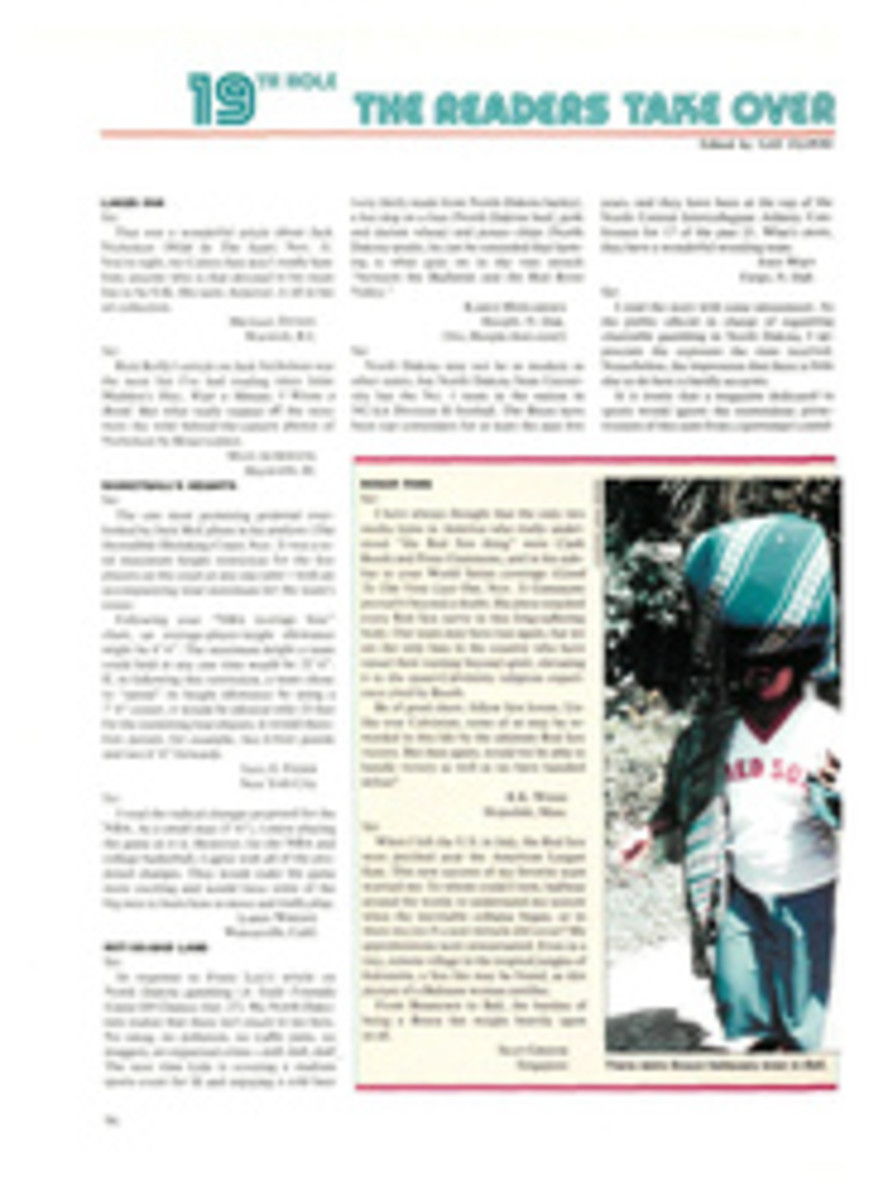
HAVE YOUR SKI BOOTS GOT YOU SORE? A COMFORTING CHANGE IS NOW AFOOT
After decades of making motorcycle helmets, the Italian manufacturer Nava has built a reputation for ensuring the safety of your head, not the comfort of your feet. Now the company is betting that there is a huge pool of well-heeled (though poorly shod) skiers out there who are fed up with icy toes, battered ankles and long, agonizing trudges across parking lots. Fed up enough to pay $450 for a boot-and-binding system that combines the comfort of after-ski boots with the skiing control normally found in high-performance gear.
The key to the Nava system is its unusual binding. A rigid plastic arm juts up from the back of the binding and snakes around the calf just below the knee. The skier's leg movements are transferred to the ski through the plastic arm, eliminating the need for stiff ski boots, which traditionally have transmitted the leg movements to the ski.
The Nava boots, which look like chic galoshes and fit like lightweight hiking boots, are designed in three parts. The inner boot laces up slightly higher than a high-top basketball shoe and provides ankle support. The outer boot, consisting of bonded layers of fabric, zips up the side and clinches below the knee with an elastic cuff to provide a water-and snow-proof seal that keeps the lower leg dry and warm. The boot's sole is fashioned out of polyurethane and connects to the binding in three places: at the heel, under the arch and under the ball of the foot. Nava says the binding meets all international safety-release standards.
The system was invented in the early 1970s by an Italian architect and skier, Antonio Faullin. He received a patent in Italy for the product and developed a prototype, but he sold the rights to it in the mid-'70s. The rights passed through several owners before landing on the desk of Pier Luigi Nava, whose company produces about 800,000 motorcycle helmets a year.
Nava, an avid skier, saw the potential of manufacturing the system using injection-molding techniques similar to those used in his helmet factory. He began tinkering with and modifying the design, and in April 1983 he introduced the boot to the skiing public in San Sicario, Italy. The following winter the company began marketing the system all over Italy, then in France and last season in Canada. By March more than 18,000 pairs had been sold in Europe, Australia and Canada, according to Frank Vener, the head of Nava Leisure USA, which began to market the boots in the U.S. in February of this year.
Despite its odd look and unnerving lack of ankle support, the system performs just fine. Some skiers are startled when the first flick of their knee sends the ski onto its edge and whips it through a turn faster than they know how to handle it. But it only takes a run or two to tame your wilder instincts and let subtle knee motions guide the ski.
Nava really proves its worth in the moguls, where even the most comfortable traditional boots bang ferociously on the front of a skier's shins. Skiing the Nava system in the bumps is no more painful than walking down a flight of stairs in tennis shoes. The only limit to the amount of skiing you do is the endurance of your thighs, not your tolerance of pain.
The company hopes to sell about 7,500 units through some 100 retailers in the United States this season. Vener thinks the biggest resistance to the Nava system will come from the hotshot skier, "the racer who has predetermined ideas about what the boot and binding should do." To counter that, Nava has signed up former World Cup racing stars Patrick Russel, Walter Vesti and Herbert Plank to endorse the boot and to help the company carve out its own niche among the skiing elite.
Another hard sell will be among the budget-conscious, who may balk at shelling out top dollar for boots and bindings. But Vener hopes the company can tap what he feels is a vast reservoir of skiers willing to pay $450 for pain-free skiing—once they overcome their reluctance to invest in such a radical concept. Vener compares the Nava System to other breakthroughs in sporting equipment: the oversized tennis racket, the metal ski and the plastic ski boot. Everyone scoffed at first, he says, but in a few years the novelty became the norm.
PHOTO
COURTESY NAVA LEISURE USA INC.
The Nava design allows for a soft shoe.
Clint Swett works for the "Sacramento Bee" when he's not out on the slopes.

